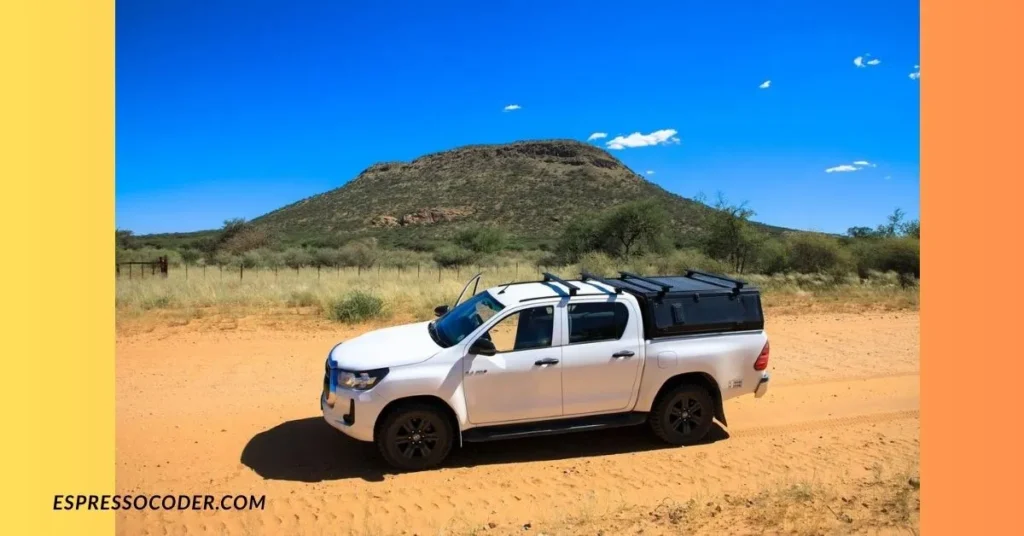You want a setup that earns its keep Monday to Friday but still has enough grunt to chase sunsets on Saturday? What you need is a dual-purpose canopy rig. With it, your shiny ute with extra storage is also your mobile workshop, basecamp, and adventure buddy.
For tradies who love knocking off and heading bush, the right build makes all the difference. Crucial to this is the canopy you choose. For starters, you want one that’s specifically designed for the make and model of your vehicle. That means if you own a Ford Ranger, you should get a Ford Ranger canopy.
Contents
- Understanding Your Real-World Needs
- Choosing the Right Canopy: Tub-Back or Full Tray?
- Storage That Works Overtime
- Powering Up: 12V Systems Built for Both Worlds
- Weekend Warrior Mods You Can Hide During the Week
- Weight, GVM, and Suspension: Don’t Skip This Bit
- Quick-Change Gear for the Weekend Switch
- One Rig, Two Lives for the Hardworking Off-Road Enthusiast
Understanding Your Real-World Needs
Before you start bolting in drawer systems or throwing in a 12V setup, pump the brakes and look at how you actually use your ute. Is it lugging ladders and impact drills every day? Or are you packing drones and camera gear between shoot locations? The magic’s in matching your build to your lifestyle. Ask yourself:
- What gear do I haul during the workweek?
- What do I need quick access to when off-road?
- Are my trips overnight getaways or full-blown week-long treks?
Choosing the Right Canopy: Tub-Back or Full Tray?
This is where it gets real—picking your platform. If you’re sticking with your factory tub, a tub-back canopy offers convenience without too much extra weight. Perfect if you’re city-based during the week and only heading bush on weekends.
But if you’re chasing versatility, volume, and load strength, a full tray-back canopy is the go. You can bolt on drawer systems, tuck a water tank underneath, or even slide out a full kitchen setup. You will add weight, so don’t forget to factor in your GVM and suspension.
Storage That Works Overtime
Storage can make or break a dual-purpose build. You want a setup that doesn’t just hold your gear—it needs to work with you. That means tools on Monday, recovery kit on Friday arvo. Some top-tier storage solutions to consider:
- Heavy-duty drawer systems – Chuck in tools during the week, then swap in your camp kitchen and spares when heading off-road.
- Custom shelving or crates – Adjustable racks give you flexibility without the fuss.
- Fold-down workbenches – Doubles as a workspace on-site and a solid chopping board or stove station in camp.
The golden rule here is don’t make it a mission to switch modes. If you’re spending more time packing than driving, something’s off. Aim for a setup where the gear flows between both roles. That way, once the whistle blows Friday arvo, you’re not stuck doing a full teardown. You’re pointing the rig north and chasing dirt.
Powering Up: 12V Systems Built for Both Worlds
No canopy rig’s complete without a reliable 12V system. It’s about being prepared, whether you’re drilling holes or boiling the billy at camp. At the core, you’ll want:
- A dual battery setup (DC-DC charger is essential)
- A stack of USB ports and Anderson plugs
- An inverter if you’re running 240V tools or laptops
- If you’re keen, a solar panel on the roof to top it all off
Mount your control panel somewhere easy to reach—no one wants to climb over gear to flick on lights. This setup keeps your fridge humming, devices charging, and work gear juiced up, all without touching your starter battery. It’s self-sufficiency on wheels.
Weekend Warrior Mods You Can Hide During the Week
Nothing beats the feeling of a rig that looks all business from the outside but turns into a bush basecamp when the weekend rolls around. Some of the best mods? You’d never know they’re there until it’s go time. Here are some sneaky upgrades worth a look:
- Slide-out kitchens – Hide it in a lower drawer, ready for bacon and eggs by sunrise.
- Roof-mounted awnings – Throw shade on a jobsite or your swag, depending on the day.
- Water tanks with hose connections – Handy for cleaning hands on-site, and dusty feet by the beach.
- LED camp lights – Bright enough for late finishes or finding your stubby in the dark.
The trick’s keeping it clean and modular. That way, your boss sees a tradie’s workhorse, while your mates know you’ve got a camper in disguise. Talk about having your cake and eating it too.
Weight, GVM, and Suspension: Don’t Skip This Bit
Canopy setups add weight fast, especially when doubling up on work and play gear. Ignore GVM and you’ll end up with a saggy rear end and dodgy handling. Here’s what to do:
- Weigh your rig fully loaded (tools, fuel, passengers, the lot).
- Compare it to your GVM. If you’re close to the limit, you’ll need an upgrade.
- Look into suspension mods. Think load-rated springs or airbags.
Quick-Change Gear for the Weekend Switch
No one wants to spend Friday night unpacking a ute for a weekend getaway. With the right gear, your switch from tradie to tourer can be quicker than a servo pie break. Here are some quick-change tips:
- Fridge slides with quick-release pins
- Velcro panels or clip-in modules
- Crates pre-packed with camping gear
- Plug-and-play lights and accessories
The idea’s simple: Have your weekend setup ready to slide in, clip on, or plug in. That way, when your mates are fuelled up and waiting, you’re not still crawling around in the canopy fiddling with cords.
One Rig, Two Lives for the Hardworking Off-Road Enthusiast
At the end of the day, a dual-purpose canopy rig is about blending utility with lifestyle. It works when you do, and it plays just as hard when you’re off the clock. Get the setup right, and you won’t have to choose between being prepared for the jobsite and ready for the bush. Your canopy should keep pace with your week, from toolbox to tackle box and from invoices to outback. Build it smart, and it’ll never let you down—no matter where the track takes you.

